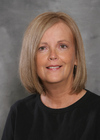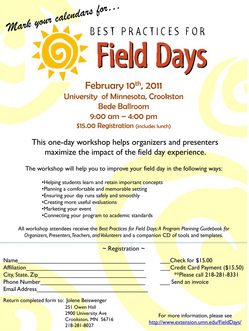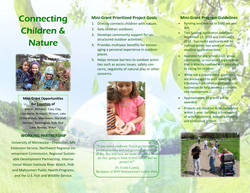The Torch & Shield Award recognizes the leadership of individuals and organizations who have been influential on the development of the University of Minnesota, Crookston; Northwest Research and Outreach Center; and Extension. It is the highest recognition awarded by the campus and this year three individuals and an organization will be honored with the award. A social, program, and banquet celebrating the award recipients will be held on Tuesday evening, October 26, 2010. The evening also honors the donors who have given in support of the campus over the past year.
The event will be live streamed that evening at
http://www3.crk.umn.edu/people/services/MediaServ/Stream.htm. Click on "Connect to Live Event"
The 2010 Torch & Shield Award recipients are:
 Susan Brorson
Susan Brorson, Ph.D., is a professor and head of the Business Department at the University of Minnesota, Crookston. She has served as head of the department for the past six years. Brorson has embraced and nurtured educational innovation. First, through teaching as the U of M, Crookston transitioned to a technology-focused baccalaureate campus in the 1990s, and most recently, through her work as an administrator. Under her leadership, the Business Department has grown to offer five baccalaureate degrees online and serve more than 400 degree-seeking students. Her work on the campus spans more than 30 years, and she has served as a role model for young women and consistently championed the role of women through her support and encouragement. She has twice been honored by the U of M, Crookston with the Distinguished Teaching Award, and in 2001 she was recognized by Women in Technology International for contributions to the advancement of technology. Brorson holds a doctorate in teaching and learning and a master's degree in marketing education from the University of North Dakota, Grand Forks, and a bachelor's degree in marketing education from Minnesota State University Moorhead.
Phil Baird is an associate professor in the Agriculture and Natural Resources

Department at the U of M, Crookston where he has served since 1979. An innovative and dedicated instructor, Baird has served as an adviser to countless students. He has received Crookston campus recognition including UMC Student Association awards for Academic Adviser of the Semester, Outstanding Educator of the Year, and Outstanding Service to Students, as well as the Distinguished Teaching Award. He has also received the University of Minnesota's President's Award for Outstanding Service and the Horace T. Morse University of Minnesota Alumni Association Award for Outstanding Contributions to Undergraduate Education. For the past 28 years, Baird and Tom Feiro have taken his students each spring to the Deer River District on the Chippewa National Forest for a long weekend of planting trees and experiencing the meaning of service, hard work, teamwork, and responsibility. Their crews have planted more than 155,000 trees. Baird has also coordinated the Northwest Urban Forestry Workshop for the past 27 years; designed to provide training and the advancement of urban forestry for cities and counties in northwestern Minnesota and the region. Baird holds a master's degree in forest administration and management and a bachelor's degree in outdoor recreation resources management, both from Iowa State University in Ames.
 David Hoff
David Hoff joined the teaching staff at the University of Minnesota Technical College in Crookston in 1967. He is responsible for starting the ag business program in 1970, served as interim chair of the Ag Division in 1988-89, and was involved in many of the North American Colleges and Teachers of Agriculture (NACTA) Judging Conferences over the years serving as judging team coordinator from 1988-2004. Hoff initiated the discussion leading to a cooperative agreement with the Agricultural Education Department at the University of Minnesota in St. Paul which allowed students to earn their agricultural education degrees on the Crookston campus. In 1978-79, he was part of a teacher exchange to Berkshire College of Agriculture in England. He holds a master's degree in agricultural economics and a bachelor's degree in agricultural education, both from North Dakota State University in Fargo.
KROX AM Radio 1260 is only the second organization to be recognized with the Torch &

Shield Award. Founded in April 1948, the
station has been broadcasting everyday for more than 62 years. It is owned and operated by Gopher Communications Company, which is comprised of Frank and Jeanette Fee. A community-minded radio station, KROX works in cooperation with the University of Minnesota, Crookston and covers news stories from the campus as well as broadcasting Insight Radio, a weekly radio program featuring students, faculty, and staff on the Crookston campus. The station is also dedicated to the broadcasting of Golden Eagle athletics and has traveled countless miles to bring athletic action to the fans. Staff members at KROX include: Frank Fee, general manager, sales, news and sports; Jeanette Fee, office manager; Chris Fee, traffic director, announcer, Web site and sports; Tom Helgeson, sales; Raymond Lee, morning announcer and host of Valley Talk; MaryAnn Simmons, news director; Jacob Fee, announcer and Web site coordinator; Joshua Leyh, afternoon/evening announcer; Cecil Malme, Alisa Cardinal, Mark Anderson who serve as weekend and part-time announcers; and Stan Mueller, station engineer.
The purpose of recognizing someone with a Torch & Shield Award is to honor contributions of significance to higher education, the Crookston campus, and the region; recognize champions of UMC, NWROC, and Extension for their impact on the region through teaching, research, and outreach; and distinguish both high profile individuals and those who have been "quiet" contributors to the success of the U of M, Crookston. For more information or to view past recipients of the award, visit www.umcrookston.edu/torchandshield.
Today the University of Minnesota, Crookston delivers 29 bachelor's degree programs, 18 minors, and more than 40 concentrations, including several online degrees, in the areas of agriculture and natural resources; business; liberal arts and education; and math, science and technology. With an enrollment of about 1,400 undergraduates from more than 25 countries and 40 states, the Crookston campus offers a supportive, close-knit atmosphere that leads to a prestigious University of Minnesota degree. "Small Campus. Big Degree." To learn more, visit www.umcrookston.edu.
Contact: Corby Kemmer, director, development and alumni relations, 218-281-8434 (ckemmer@umn.edu); Elizabeth Tollefson, assistant director, communications, 218-281-8432 (ltollefs@umn.edu)
 presenters improve the field experience for students by helping them learn and retain important concepts, plan a comfortable and memorable setting, ensure the day runs safely and smoothly, create more useful evaluations, market an event, and to employ designs that help connect youth with nature.
presenters improve the field experience for students by helping them learn and retain important concepts, plan a comfortable and memorable setting, ensure the day runs safely and smoothly, create more useful evaluations, market an event, and to employ designs that help connect youth with nature. 






